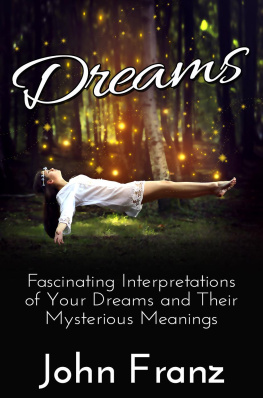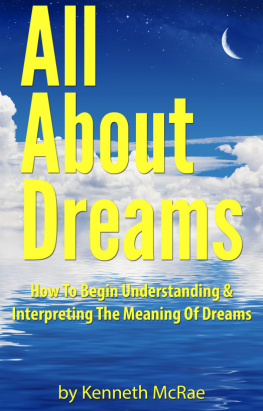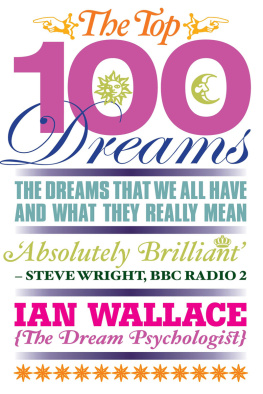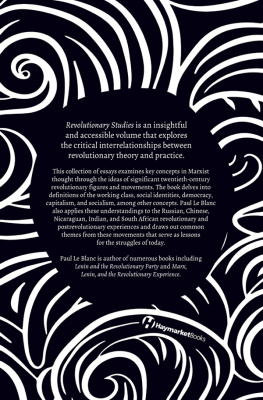Stites - Revolutionary Dreams
Here you can read online Stites - Revolutionary Dreams full text of the book (entire story) in english for free. Download pdf and epub, get meaning, cover and reviews about this ebook. year: 1989, publisher: Oxford University Press, genre: Politics. Description of the work, (preface) as well as reviews are available. Best literature library LitArk.com created for fans of good reading and offers a wide selection of genres:
Romance novel
Science fiction
Adventure
Detective
Science
History
Home and family
Prose
Art
Politics
Computer
Non-fiction
Religion
Business
Children
Humor
Choose a favorite category and find really read worthwhile books. Enjoy immersion in the world of imagination, feel the emotions of the characters or learn something new for yourself, make an fascinating discovery.

Revolutionary Dreams: summary, description and annotation
We offer to read an annotation, description, summary or preface (depends on what the author of the book "Revolutionary Dreams" wrote himself). If you haven't found the necessary information about the book — write in the comments, we will try to find it.
Stites: author's other books
Who wrote Revolutionary Dreams? Find out the surname, the name of the author of the book and a list of all author's works by series.
Revolutionary Dreams — read online for free the complete book (whole text) full work
Below is the text of the book, divided by pages. System saving the place of the last page read, allows you to conveniently read the book "Revolutionary Dreams" online for free, without having to search again every time where you left off. Put a bookmark, and you can go to the page where you finished reading at any time.
Font size:
Interval:
Bookmark:
REVOLUTIONARY DREAMS
utopian Vision and Experimental Life
in the Russian Revolution
RICHARD STITES

Oxford University Press
Oxford New York Toronto
Delhi Bombay Calcutta Madras Karachi
Petaling Jaya Singapore Hong Kong Tokyo
Nairobi Dar es Salaam Cape Town
Melbourne Auckland
and associated companies in
Berlin Ibadan
Copyright 1989 by Oxford University Press, Inc.
First published by Oxford University Press, Inc.,
198 Madison Avenue, New York, New York 100164314
First issued as an Oxford University Press paperback, 1991
Oxford is a registered trademark of Oxford University Press
All rights reserved. No part of this publication may be reproduced,
stored in a retrieval system, or transmitted, in any form or by any means,
electronic, mechanical, photocopying, recording, or otherwise,
without the prior permission of Oxford University Press.
Library of Congress Cataloging-in-Publication Data
Stites, Richard.
Revolutionary dreams.
Bibliography: p.
Includes index.
1. Soviet UnionIntellectual life1917
2. Utopias. 3. Soviet UnionHistoryRevolution.
19171921. I. Title.
DK266.4.S75 1989 947.084 885263
ISBN 0-19-505536-5
ISBN 0-19-505537-3 (pbk)
6 8 9 7 5
Printed in the United States of America
on acid-free paper
To Helena
and her Country
In this workwhich might be called history from the side rather than history from above or belowthe object of study is often odd: street motion, funerals, science fiction novels, dress styles, parades, the formation of queues, the naming of babies, songs, and many other thingsas well as the more familiar categories of historical behavior. The source base, like the subject matter itself, is extremely diverse and eclectic. One can hardly ask a librarian or an archivist for the files on gesture, revolutionary space, life styles, or images. There is therefore no main collection or fond from which I have drawn my information. I have simply read widely in some of the best libraries in the world. To do this, I have accumulated many scholarly debts over the past ten years. For financial support I wish to thank Ohio State University, the Kennan Institute for Advanced Russian Studies of the Wilson International Center for Scholars, the National Endowment for the Humanities, the Graduate School and the Quigley Fund of Georgetown University, the W. Averill Harriman Institute for the Advanced Study of the Soviet Union at Columbia University, the John Simon Guggenheim Foundation, the Fulbright Faculty Research Awards program, and IREX. A bare enumeration of grants cannot convey the intangible assistance that I have gotten from these organizationsa place to study and research, an intellectual environment, a band of friendly well-wishers, letters of support and introduction, and various kinds of material and logistical aid. I thank them all deeply.
Among the many libraries and other study centers I have used, the following were the most important: in Leningrad, the State Public Library, the library of the Philharmonia, the city network of listening-rooms (fonoteki) provided by the public library, the library of the Rimsky-Korsakov Conservatory of Music, the Institute of Theater, Music, and Cinematography, the Museum of Musical Instruments, the Museum of the History of Atheism and Religion, and the Library of the Academy of Sciences; in Moscow, the Lenin Library; in Helsinki, the Slavonic Library, the Finnish Literature Society, the Soviet Institute, the Labor Archives, the Library of the Museum of Finnish Architecture, and the science fiction collection of the Ursu Astronomical Society; in London, the British Library and the library of the School of Slavonic and East European Studies; in Munich, the library of the East European Institute; in Garmisch, the U.S. Army Russian Institute; in New York, the New York Public Library and the libraries of Columbia Universityespecially the Avery Library of Art and Architecture; in Washington, the Library of Congress, the National Archives, the National Institute of Health (Bethesda) Medical Library, and the American Red Cross.
I thank those who read parts or all of my manuscript and made helpful comments about my research: Joseph Bradley, Jeffrey Brooks, Katerina Clark, Theodore Friedgut, Ben Hellman, John Hutchinson, Peter Kenez, Louise McReynolds, JoAnn Moran, Daniel Orlovsky, Gennady Ozernoy, Deborah Pearl, Marcus Rediker, Roman Serbyn, Jutta Scherrer, Ronald Suny, Ilmari Susiluoto, Robert C. Tucker, and Peter Weisensel. For conscientious research assistance at Georgetown, the Wilson Center, and Columbia, thanks to Alessandra Schroeder, Dina Birman, Denis McAuley, William Verley, Douglas Blum, Mark Rykoff, Thomas Barrett, and, most of all, Richard Johnson. My warm gratitude for the typing done by Helen Whitlock, William Di Giacomantonio, Karen Shellman, and Kathleen Ruschaupt. For that special combination of intellectual encouragement and warm friendship, I thank Abraham Ascher, Abbott Gleason, David Gold-frank, Leopold Haimson, Lars Kleberg, Marcus Rediker, Priscilla Roosevelt, Charles Rougle, Jonathan Sanders, S. Frederick Starr, and Richard Wortman. Most of all I am grateful for the love and companionship of Helena Jrvinen and Andryusha Stites.
is a reworking, with additional research, of an earlier essay published in Abbott Gleason, et al., eds. Bolshevik Culture (Bloomington: Indiana University Press, 1985). I thank Indiana Press for allowing me to use it here.
(following p. 164)
1. Religious utopia: the Vyg Old Believer Community (18th century). R. Crummey, The Old Believers and the World of Antichrist (Madison: University of Wisconsin Press, 1970).
2. Gruzino: the Militarized Estate of Arakcheev (c. 1800). M. Jenkins, Arakcheev (New York: Dial, 1969).
3. Phalanstery: from the Collection of a Petrashevskian (1840s). V. Leikina, Petrashevtsy (Moscow, 1924).
4. utopian Landscape on Mars: Bogdanovs Red Star (1908). A. Bogdanov, Red Star (Bloomington: Indiana University Press, 1984).
5. Euphoric Vision: A Year of Proletarian Dictatorship (1918). Sovetskii politicheskii plakat (Moscow, 1984).
6. Dreamers in the Kremlin (1920). Lenin and H. G. Wells. Wells, Russia in the Shadows (New York: Doran, 1921).
7. Trotsky and the Train: The Intellectual Militarized (c. 1919). H. Salisbury. Russia in Revolution (New York: Holt, 1970).
8. Pugachv Redivivus: The Ukraine Insurgent (c. 1918). P. Avrich, ed. The Anarchists in the Russian Revolution (Ithaca: Cornell University Press, 1973).
9. The Gutted Litovsky Fortress: A Photograph (1917). H. Salisbury. Russia in Revolution (New York: Holt, 1970).
10. The Gutted Litovsky Fortress: A Romanticized Postcard (1917). H. Salisbury. Russia in Revolution (New York: Holt, 1970).
11. Lenin Sweeps Away the Old Order (1920). M. Guerman, Art of the October Revolution (New York: Abrams, 1979 and Aurora Art Publishers, Leningrad).
12. Citizens, Preserve Monuments of Art (1920). Sovetskii politicheskii plakat (1984).
13. February Days, Moscow (1917). Finnish Labor Archives, Helsinki.
14. The Two-Headed Eagle of the Provisional Government (1917). M. Lyashchenko, Rasskazy o Sovetskom gerbe (Moscow, 1963).
Next pageFont size:
Interval:
Bookmark:
Similar books «Revolutionary Dreams»
Look at similar books to Revolutionary Dreams. We have selected literature similar in name and meaning in the hope of providing readers with more options to find new, interesting, not yet read works.
Discussion, reviews of the book Revolutionary Dreams and just readers' own opinions. Leave your comments, write what you think about the work, its meaning or the main characters. Specify what exactly you liked and what you didn't like, and why you think so.









